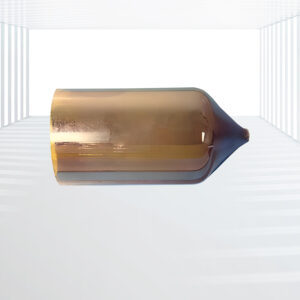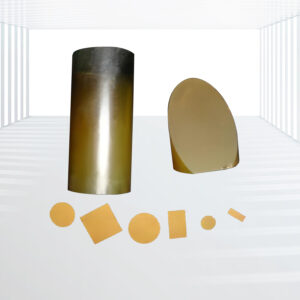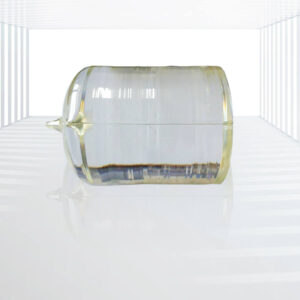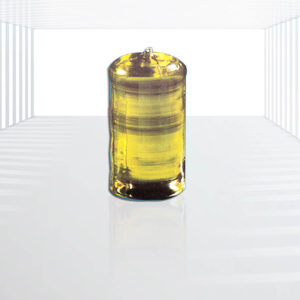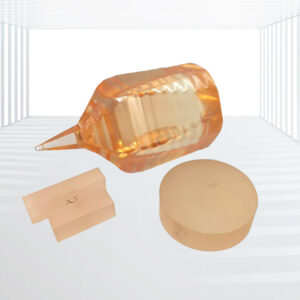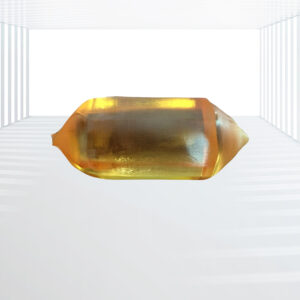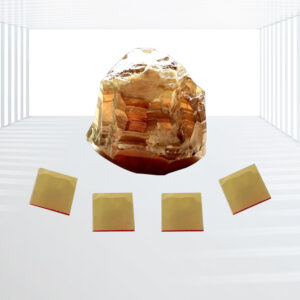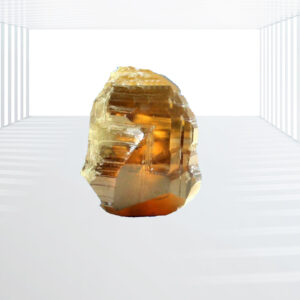CTGS Crystals
Simple description:
Calcium tantalum gallium silicate crystals, specifically Calcium Gallium Tantalum Silicate (Ca3TaGa3Si2O14, CTGS), are crystalline materials with unique physical and chemical properties. Their crystal structure is composed of gallium silicate ions and calcium tantalum ions, exhibiting high charge density and electron cloud polarization effects. These properties contribute to the high ionic bond strength and stiffness of calcium tantalum gallium silicate crystals. Additionally, the chemical composition of these crystals contains tantalum, an element with a high number of electrons and atomic mass, further enhancing the stiffness of the crystals.
Advantages: High Stiffness, Excellent Mechanical Stability, Piezoelectric Properties, Biocompatibility
Application fields: Optical Field, Electronics Field, Medical Field, Sensor Technology Field:
Simple description:
Calcium tantalum gallium silicate crystals, specifically Calcium Gallium Tantalum Silicate (Ca3TaGa3Si2O14, CTGS), are crystalline materials with unique physical and chemical properties. Their crystal structure is composed of gallium silicate ions and calcium tantalum ions, exhibiting high charge density and electron cloud polarization effects. These properties contribute to the high ionic bond strength and stiffness of calcium tantalum gallium silicate crystals. Additionally, the chemical composition of these crystals contains tantalum, an element with a high number of electrons and atomic mass, further enhancing the stiffness of the crystals.
Detailed Description:
Calcium tantalum gallium silicate crystals, specifically Calcium Gallium Tantalum Silicate (Ca3TaGa3Si2O14, CTGS), are crystalline materials with unique physical and chemical properties. Their crystal structure is composed of gallium silicate ions and calcium tantalum ions, exhibiting high charge density and electron cloud polarization effects. These properties contribute to the high ionic bond strength and stiffness of calcium tantalum gallium silicate crystals. Additionally, the chemical composition of these crystals contains tantalum, an element with a high number of electrons and atomic mass, further enhancing the stiffness of the crystals.
The stiffness of calcium tantalum gallium silicate crystals is also affected by temperature. At low temperatures, the atoms and ions in the crystal lattice vibrate less, resulting in higher ionic and covalent bond strengths and thus higher stiffness. However, at high temperatures, the vibrations of atoms and ions in the crystal lattice increase, reducing the strength of ionic and covalent bonds and consequently lowering the stiffness of the crystals.
Due to their high stiffness, good mechanical stability, and biocompatibility, calcium tantalum gallium silicate crystals have widespread applications in optics, electronics, and medicine. For instance, they can be used to manufacture high-precision optical components, encapsulation and protective layers for microelectronic devices, and orthopedic implants.
Advantages:
- High Stiffness: Calcium tantalum gallium silicate crystals exhibit high stiffness, capable of resisting deformation under external forces and maintaining a stable shape. This propertyit significant advantages in the manufacture of high-precision optical elements (such as optical lenses and optical prisms) and mechanical support structures in optical instruments and equipment.
- Excellent Mechanical Stability: These crystals demonstrate excellent mechanical stability, enduring high-temperature and high-pressure environments without deformation or fracture. Therefore, they are widely used in the encapsulation and protective layers of microelectronic devices, providing protection and support for the devices.
- Piezoelectric Properties: Calcium tantalum gallium silicate crystals also possess piezoelectric properties, meaning they can convert mechanical energy into electrical energy or vice versa. This characteristic renders them potential candidates for applications in high-temperature piezoelectric sensing technology.
- Biocompatibility: These crystals exhibit good biocompatibility, causing minimal rejection reactions in the human body. This makes them potentially valuable in the medical field, such as for the manufacture of orthopedic implants (e.g., bone plates and bone screws) to treat fractures and bone defects.
Application fields:
- Optical Field: Calcium tantalum gallium silicate crystals have important applications in the optical field. Due to their high stiffness and stable shape, they can be used to manufacture high-precision optical components such as optical lenses and optical prisms. Additionally, they can be utilized in mechanical support structures for optical instruments and equipment, ensuring the stability and accuracy of optical devices and improving their performance and lifespan.
- Electronics Field: In microelectronic devices, calcium tantalum gallium silicate crystals are widely used due to their good mechanical stability and high stiffness. They can serve as encapsulation and protective layers for electronic devices, providing protection and support. Furthermore, they can be used as mechanical springs and electronic springs in electronic devices to provide stable mechanical and electrical connections.
- Medical Field: Calcium tantalum gallium silicate crystals also have potential applications in the medical field. Due to their high stiffness and good biocompatibility, they can be used to manufacture orthopedic implants such as bone plates and bone screws for the treatment of fractures and bone defects. These implants can provide stable support and promote bone healing and growth.
- Sensor Technology Field: Calcium tantalum gallium silicate crystals have piezoelectric properties, making them promising candidates for applications in sensor technology. They can be used to fabricate high-temperature pressure, gas, flow, and vibration sensors, which have wide applications in aerospace, oil exploration, and the chemical industry.
Specifications:
| Parameter Name | Description |
| Chemical Formula | Ca3TaGa3Si2O14 |
| Crystal Structure | Complex crystal structure containing gallium silicate ions and calcium tantalum ions |
| Crystal System | Trigonal crystal system |
| Point Group | 32 Point Group |
| Hardness | Relatively high (specific value depends on synthesis conditions) |
| Density | Relatively high (specific value requires experimental determination) |
| Melting Point | Relatively high, typically synthesized at high temperatures |
| Color | May vary depending on synthesis conditions and impurity content |
| Transparency | May vary depending on crystal quality and thickness |
| Optical Properties | May exhibit properties such as birefringence and fluorescence |
| Electrical Properties | May exhibit piezoelectric and dielectric properties |
| Thermal Properties | Good thermal stability, able to remain stable within a certain temperature range |
| Mechanical Properties | High stiffness and good mechanical stability |
| Main Applications | Potential applications in optics, electronics, medical fields, etc. |

晶体.jpg)
2.jpg)
